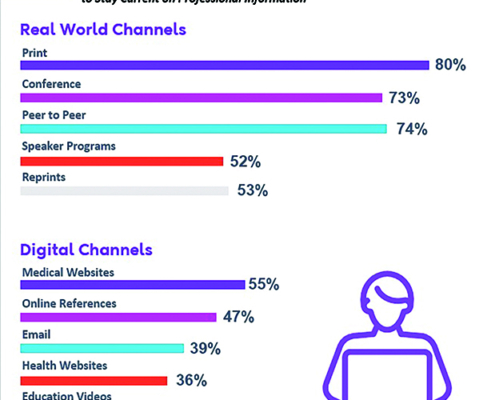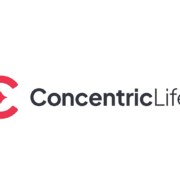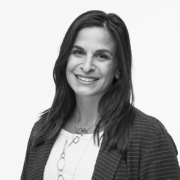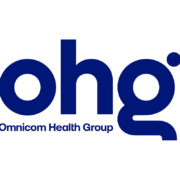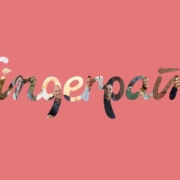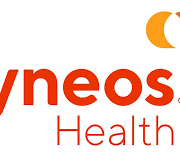Embracing an omnichannel world
Embracing an omnichannel world
Insights from CMI Media Group’s Media Vitals Research, specially prepared for Med Ad News
By CMI Media Group
Arguably the No. 1 buzzword today is omnichannel – and with good reason. This comprehensive approach has shaken up our industry with impactful results. Via our Media Vitals research, we lay the groundwork for reaching HCPs in more effective ways. In this article we touch on some aspects of the research.
Our Challenge: How do we deliver personal promotion using non-personal channels? Typically, HCPs receive information throughout multiple channels and content pieces that are rarely connected. Personalization has become a nice to have, rather than a priority. But what if we made driving personalization with data and technology the new standard? By focusing our efforts on personalizing content through technology, and meeting the needs of every generation of HCP, we can streamline and customize brand messaging to specific audiences using their preferred channels, in real time.
Our Opportunity: Driven by customers who want seamless experiences, omnichannel is the opportunity. It is a practice that enables touchpoints at nearly every communication avenue. Each touchpoint serves up an opportunity to engage and inform key decision makers in a healthcare journey. “We strive to provide each individual with a seamless experience with the brand,” shares Justin Freid, chief media and innovation officer. With omnichannel, content is precisely tailored to the customer’s most preferred channels and is delivered with consistently relevant experiences. No matter which channel or demographic, the consumer’s content is relevant and orchestrated so brands are presented at key points of the decision journey to gain a definitive competitive edge.
Given what we know about omnichannel’s effectiveness, why are healthcare marketers still slow to adapt to this approach? This year, the word omnichannel was everywhere. Yet, has our industry fully embraced the true meaning? One must first appreciate the difference between multichannel and omnichannel marketing. Omnichannel is different than multichannel, which consists of selecting a few channels in piecemeal in hopes they connect seamlessly to goals.
While it is important to have diversity in the channel mix, omnichannel takes this process a step further and connects content to audiences with precision, using data and technology to reach optimal results. It is the orchestration of all customer touchpoints working in harmony with one another, at scale. Further, omnichannel enables much more sophisticated targeting based on data generated by customer interaction and preference to deliver the most relevant, impactful, personalized, and timely messages.
By embracing a true omnichannel approach, brands can move their customers from awareness to loyalty and keep HCPs best informed about opportunities and outcomes tailored to their patients’ needs. When brands deliver consistent, relevant experiences quickly and efficiently they will be rewarded with long-term relationships from loyal customers.
Ask yourself: Am I thinking omnichannel first?
Healthcare providers are busy and being time-stressed from competing demands makes it difficult to digest valuable information. It is more important than ever to get to the meat of what our consumers need quickly, with accuracy, and tailored content at the right time and place, every time.
The key to success is not anything new, however, our industry has been slower to adapt to an omnichannel-first mindset.
 Unlocking this mindset starts with developing a deep understanding of target audiences, primarily through data collected about offline and online behavior to free up valuable time for HCPs by only delivering the most relevant content, when and where they need it. Knowing an audience’s usage, barriers, and media channel preferences is a start and the combination of these audience insights allows marketers to develop complex strategies and execution plans that ensure we are meeting customers along their journey in both offline and online channels that are most valued and impactful in a unified way.
Unlocking this mindset starts with developing a deep understanding of target audiences, primarily through data collected about offline and online behavior to free up valuable time for HCPs by only delivering the most relevant content, when and where they need it. Knowing an audience’s usage, barriers, and media channel preferences is a start and the combination of these audience insights allows marketers to develop complex strategies and execution plans that ensure we are meeting customers along their journey in both offline and online channels that are most valued and impactful in a unified way.
In our 2022 Edition Media Vitals study, we find that surveyed HCPs rank real world channels, such as print journals (80 percent), conferences (73 percent), and peer-to-peer connections (74 percent), as very to extremely important sources on staying up to date on professional information. Digital channels, such as professional websites (55 percent), online drug references (47 percent), and email (39 percent), are also ranked as highly important to HCP audiences. Knowing how to connect these preferences in a concise and personalized way will ensure that we are listening to our audience’s various needs and taking action that meets said needs.
The data to follow shows how one can look towards research to unpack where consumers are absorbing impactful information most and how to take action.
“Over the years, everything seems to have changed personally and professionally, and brands need to be adaptable and find new ways to engage HCPs and Consumers improving the end-to-end experience,” says Toby Katcher, VP, video investment, CMI Media Group. “Omnichannel experiences are realized upon the expansion of potential channels that go beyond those directly managed by marketing. All the information you’re gathering will help you understand the ‘why’ of your customers and enable you to alter your strategy accordingly. It will also enable you to think ahead, understand how consumer needs are changing and ensure you are relevant by incorporating their changing needs and preferences into your products and strategies.”
“It is important to utilize these insights to understand the type of message an HCP would be receptive to on each channel,” adds Justin Freid, chief media and innovation officer, CMI Media Group. “This data can be extremely powerful for our creative agency partners.”
What to expect from a true omnichannel experience
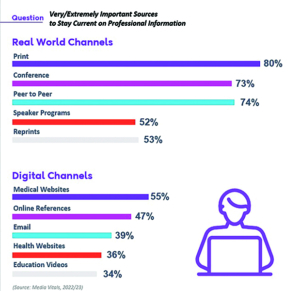 With their ever-changing and sometimes chaotic schedules, the amount of time HCPs can consume information evolves and changes throughout the day, requiring HCPs to prioritize channels based on needs. This furthers the need for marketers to implement an adaptive communication strategy that addresses HCPs throughout their journey – one that touches both white coats on and white coats off channels and moments.
With their ever-changing and sometimes chaotic schedules, the amount of time HCPs can consume information evolves and changes throughout the day, requiring HCPs to prioritize channels based on needs. This furthers the need for marketers to implement an adaptive communication strategy that addresses HCPs throughout their journey – one that touches both white coats on and white coats off channels and moments.
As HCP needs change throughout the day, they are turning to different media channels based on how quickly information is needed. It is probably no surprise that search is cited by 56 percent of HCPs as the most frequently used source for immediate use, followed closely by online drug reference tools (54 percent). For long-term educational needs, over half of HCPs will turn to print journals (55 percent) or reprints (50 percent). Interesting to note that about 25 percent visit brand websites no matter what the urgency of the information need. For marketers this means ensuring core messages are adapted to needs – either short-form, quick bites of information for times when HCPs need quick answers or long-form content when HCPs have time to lean in and learn. We can now do just that.
“We know that Google and Bing are trusted resources for HCPs, providing quick access to countless sources of information on demand,” says Andrew Miller, executive VP, digital activation, CMI Media Group. “As such, brands should be looking for ways to include what they know from other targeted tactics like Programmatic and Social Media to inform their Search messaging, strategy and content. This omnichannel approach ensures brands are providing the best possible, personalized experience for those HCPs turning to search engines for their research.”
Reaching your audience during the moments that matter
We know that endemic channels are not the only holy grail anymore; throughout the day HCPs engage with non-endemic channels, too, which means marketers must embrace these channels as additional opportunities to engage and tailor the HCP’s experience. 27 percent of HCPs surveyed indicate that they use social media for personal purposes frequently or always. Although opportunities on non-endemic channels may be more short-form, if the content is relevant and targeted to the right audience it provides an additional touchpoint to engage your HCP audience during these white coats off moments.
As brands build their own addressable market, they also consider the user’s need for trust and transparency during these key moments. Many HPCs are still willing to show their engagement with brands that offer value in their marketing content during white coats off moments. This effort will pay off, as data privacy laws — like GDPR, CCPA, and state-by-state laws, as well as privacy changes that companies like Apple and Google have made – start to impact marketers’ ability to collect behavioral data from media campaigns.
“HCPs are increasingly engaging on social channels,” says Alexandra Gilson, VP, paid social, department lead, CMI Media Group. “Whether it be for personal or professional purposes, it is important to meet HCPs when and where they are; making sure the content is authentic to the platform will be key for the success of any social campaign.”
Omnichannel delivers significant results
“Omnichannel works,” says Cliff Covey, senior VP, digital activation, CMI Media Group. “Our data shows that the more channels you have in orchestration, the bigger the impact on the business. On average, with each additional orchestrated media channel, we see 37 additional NRx written per HCP, which over time has a huge impact on our client’s business. We also know that search has a direct impact on prescribing behavior, with the higher the search volume for a brand the higher the Rx written. Creating an orchestrated experience across channels not only provides users with a great brand experience but also drives interest, pushing HCPs to search and ultimately write more prescriptions.”
Omnichannel might be now, but Omnidynamic is our future
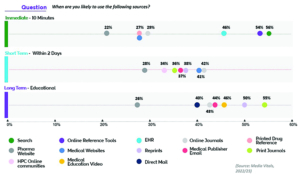 We might have the foundational understanding of omnichannel clearly mapped, but we are not done yet. As we approach 2023 and look to the future of omnichannel, an evolution is about to take us even further down the path of excellence, as if you needed yet one more buzzword. That evolution is omnidynamics.
We might have the foundational understanding of omnichannel clearly mapped, but we are not done yet. As we approach 2023 and look to the future of omnichannel, an evolution is about to take us even further down the path of excellence, as if you needed yet one more buzzword. That evolution is omnidynamics.
Coined by Jose Ferreira, executive VP, product strategy and transformation, CMI Media Group, omnidynamics is the next stage of omnichannel orchestration where organizations go beyond alignment of messages and story across prospects and customers to interactions that are dynamic in the moment. That means pairing sequencing and best messages with dynamic creative optimization principles to conform individual messages across channels to the specific profile of the person at the receiving end of the interaction – optimized for key brand benchmarks and user empowered experience.
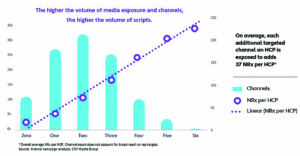 The time is now for our industry to meet where data, messaging, tech, content, and media intersect to deliver audiences with the information and access they want and need, at the exact moment they are asking for it. With 2023 here, we are barely scratching the surface of all that can and will be achieved in this ever-evolving landscape. Stay ahead of the trends and move your organizations forward now – before omnidynamics takes flight.
The time is now for our industry to meet where data, messaging, tech, content, and media intersect to deliver audiences with the information and access they want and need, at the exact moment they are asking for it. With 2023 here, we are barely scratching the surface of all that can and will be achieved in this ever-evolving landscape. Stay ahead of the trends and move your organizations forward now – before omnidynamics takes flight.

